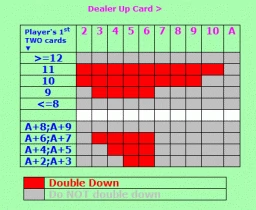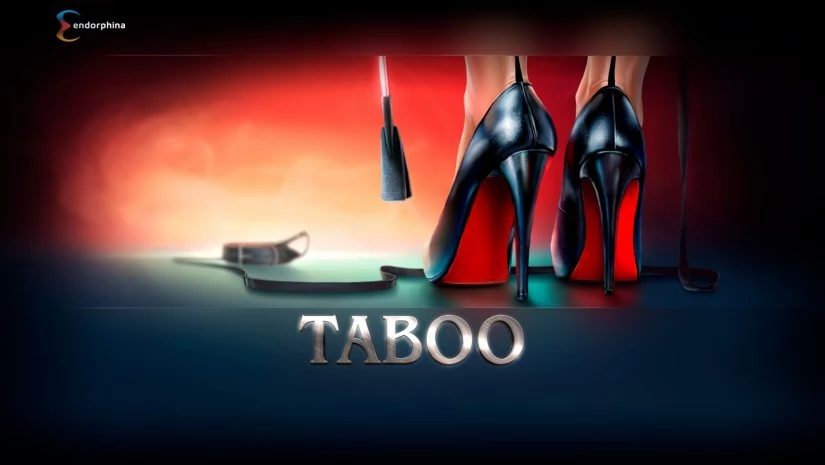Blackjack doubling strategy

There are several move that players can make in the game of blackjack but the most common are hit and stand, which is about as far as many beginners go. They aren’t aware of the others such as double up, split, surrender and insurance. We are going to get into a discussion on the first one: doubling.
Before we can even talk about doubling strategy in a game of blackjack, we need to understand what doubling actually means in the game. After you make your initial wager and are dealt your two cards in addition the dealer having received his open card, you are allowed to double your initial wager. If you double your bet, though, you must take another card and you can only take that one more card. There is not option to continue to hit. You must stand with that third card. That’s it.
Consider this for a minute: 30% if the time the drawn card will have equal 10 in value. The strategy that we are going to discuss today has been formulated to be played with a blackjack game of a single deck. If more than one deck used in the game, there are a couple of minor things that would need to be altered in order for this strategy to work properly.
If your hand totals 11 then the option to double should always be taken. The reason for this is the fact that we just stated: 30% of the time, you will receive a card value of 10. Therefore, you have a very good chance to achieving a blackjack or at least getting close to a hand that totals 21. Even if your two cards total 10 and not 11, you are still solid. The option to double should still be taken unless the fact that the dealer’s face up card is either an Ace or a card that values 10 because if this is the case then the advantage is not yours and is actually the dealer’s.
Now, let’s say your hand totals nine then that means you don’t have as many options. If the dealer has a significant chance of busting then you should double; otherwise, doubling should not be something you consider. In other words, if the dealer holds a card of between two and six. If your hand totals eight then you should only double if you see a five or a six as the dealer’s open card. If you hand total seven or less then do not double. It should not be an option. You are only able to draw one more card, that’s it so the highest you could achieve would be 18, and this isn’t a large enough reason to double your initial wager.
If you hold a soft total between 13 and 19 then you can consider doubling. Soft totals mean that your hand consists of an ace. If you were to draw a high value card then you can take your ace value of 11, diminish it to one, and remain in the game with no issues. The decision to double highly depends upon the face up card of the dealer and the chances of the dealer actually busting. With soft totals between 13 and 16, you should only double if there is a card between four and six face up for the casino dealer. If you have a soft 17 then you should only double if the face up card for the dealer is between two and six. For a soft 18, if the open card for the dealer is between three and six then you should double. If your hand is a soft 19 then you should only choose to double if you see a six as the dealer’s open card.
There you have it. It’s just a basic strategy based on the fact that 30% of the time you will receive a card of 10 value when you draw. This is important to remember because you only get one card to draw when you decide to double so this strategy and this fact is very important to keep in mind when you double in blackjack.
Before we can even talk about doubling strategy in a game of blackjack, we need to understand what doubling actually means in the game. After you make your initial wager and are dealt your two cards in addition the dealer having received his open card, you are allowed to double your initial wager. If you double your bet, though, you must take another card and you can only take that one more card. There is not option to continue to hit. You must stand with that third card. That’s it.
Consider this for a minute: 30% if the time the drawn card will have equal 10 in value. The strategy that we are going to discuss today has been formulated to be played with a blackjack game of a single deck. If more than one deck used in the game, there are a couple of minor things that would need to be altered in order for this strategy to work properly.
If your hand totals 11 then the option to double should always be taken. The reason for this is the fact that we just stated: 30% of the time, you will receive a card value of 10. Therefore, you have a very good chance to achieving a blackjack or at least getting close to a hand that totals 21. Even if your two cards total 10 and not 11, you are still solid. The option to double should still be taken unless the fact that the dealer’s face up card is either an Ace or a card that values 10 because if this is the case then the advantage is not yours and is actually the dealer’s.
Now, let’s say your hand totals nine then that means you don’t have as many options. If the dealer has a significant chance of busting then you should double; otherwise, doubling should not be something you consider. In other words, if the dealer holds a card of between two and six. If your hand totals eight then you should only double if you see a five or a six as the dealer’s open card. If you hand total seven or less then do not double. It should not be an option. You are only able to draw one more card, that’s it so the highest you could achieve would be 18, and this isn’t a large enough reason to double your initial wager.
If you hold a soft total between 13 and 19 then you can consider doubling. Soft totals mean that your hand consists of an ace. If you were to draw a high value card then you can take your ace value of 11, diminish it to one, and remain in the game with no issues. The decision to double highly depends upon the face up card of the dealer and the chances of the dealer actually busting. With soft totals between 13 and 16, you should only double if there is a card between four and six face up for the casino dealer. If you have a soft 17 then you should only double if the face up card for the dealer is between two and six. For a soft 18, if the open card for the dealer is between three and six then you should double. If your hand is a soft 19 then you should only choose to double if you see a six as the dealer’s open card.
There you have it. It’s just a basic strategy based on the fact that 30% of the time you will receive a card of 10 value when you draw. This is important to remember because you only get one card to draw when you decide to double so this strategy and this fact is very important to keep in mind when you double in blackjack.



 SpinBetter
SpinBetter All Right
All Right Girls with Guns: Frozen Dawn
Girls with Guns: Frozen Dawn Jetsetter
Jetsetter Girls with Guns: Jungle Heat
Girls with Guns: Jungle Heat Taboo by Endorphina
Taboo by Endorphina Fairy Tale by Endorphina
Fairy Tale by Endorphina